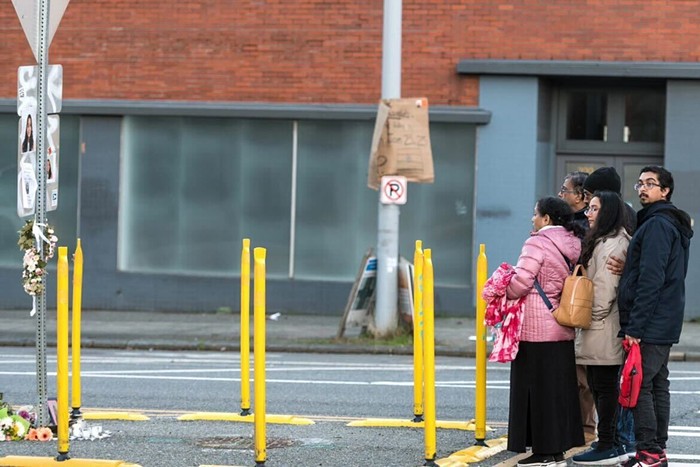As the economy continues its free fall, homeless shelters around Seattle say they’re seeing a steady increase in the number of people seeking refuge from the cold winter nights. “I think the fact that the economy has been sinking over the last few months is definitely starting to play into it,” says Ryan Fouts, a case manager at ROOTS, a 25-bed shelter in the University District that exclusively serves 18- to 25-year-olds.
In an unfortunate coincidence, the shelters are also seeing an increase in unwelcome parasitic guests: bedbugs.
This winter, residents at several Seattle shelters have woken up to find themselves covered in small, itchy, red bite marks, usually near a vein. “This is something that’s come up for us very recently,” says ROOTS executive director Sinan Demirel. “We thought we had dodged this bullet, and then we found our first bedbugs.”
Bedbugs—small, flat, red bugs, detectable by bite marks as well as telltale smears of blood and bug feces left behind on bedsheets—are a growing problem across the United States. Cities like San Francisco and New York City have formed task forces and instituted public-awareness campaigns, distributing pamphlets and warning stickers after citywide outbreaks in shelters, apartment buildings, and hotels.
Until recently, Seattle public-health officials hadn’t tracked bedbug infestations, as the pests don’t spread disease. But in October, Heather Barr, a public health nurse for King County’s Healthcare for the Homeless Network, set up a task force to track bedbug outbreaks at shelters across the city.
“Over the summer, we’d had several calls and didn’t know… how much of a problem this was,” Barr says. It turns out “there are a number of places having the issue. I couldn’t say every single shelter [is], but a lot of them are having this problem.”
Since she began tracking bedbugs in Seattle, Barr says she’s seen people with “50 or 60 bites on their body,” some of them the width of a coffee cup. “[Bedbugs] are a nuisance-type critter, but it’s such a big nuisance,” Barr says. “It’s disturbing for the person to wake up and find themselves covered with [bites].”
While the bites are undoubtedly uncomfortable and unsettling for the shelters’ clients, there are psychological impacts as well—“especially for someone who’s been bit all over their face and has to go out and look for job,” Demirel says. After an outbreak at ROOTS in December, Demirel says his shelter was forced to toss nearly half of its mattresses; now, he says, the group will have to shell out at least $5,000 for pest control and replacement bedding. “This is a huge expense we hadn’t budgeted for,” Demirel says.
Small shelters like ROOTS aren’t the only ones dealing with the pests. Although managers at the Downtown Emergency Service Center (DESC), one of the largest shelters in the Seattle area, downplayed the shelter’s bedbug problem, one staff member says that on a scale of 1 to 10, DESC’s infestation “is probably an eight.” According to the DESC staffer, who asked not to be named, the shelter has had a problem with bedbugs for a long time. “They’re almost impossible to get rid of,” the staffer says. “Bedbugs can lie dormant for nine months. Even if we kill them, if one [more bug] comes in, they can spread to the rest of the dorms.”
Things have gotten so bad at the 180-bed shelter, the staff member says, that “on a standard night, there’s probably at least 10 people sleeping in the lobby because they don’t want to sleep in the dorm” out of fear of being bitten. According to the staff member, one client even left the shelter and returned to a campsite to avoid being bitten in his sleep.
Seattle’s bedbug problem hasn’t yet reached epidemic proportions, but as traffic at shelters increases, the problem could grow. “Bedbugs are not class-conscious at all,” nurse Barr says. “They’ll go wherever there are warm bodies.”


















